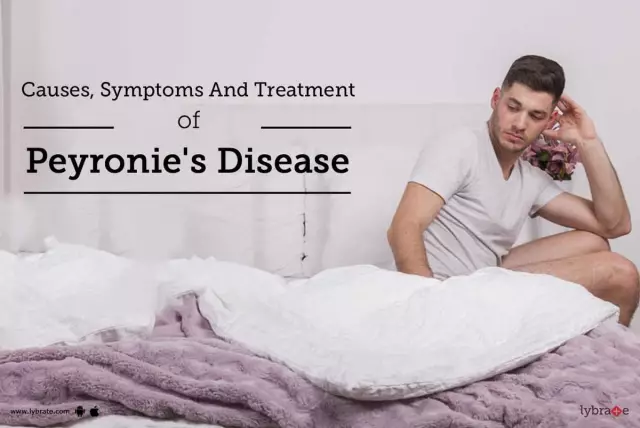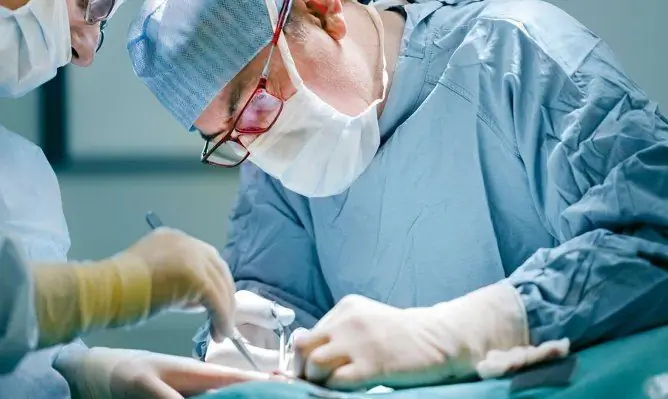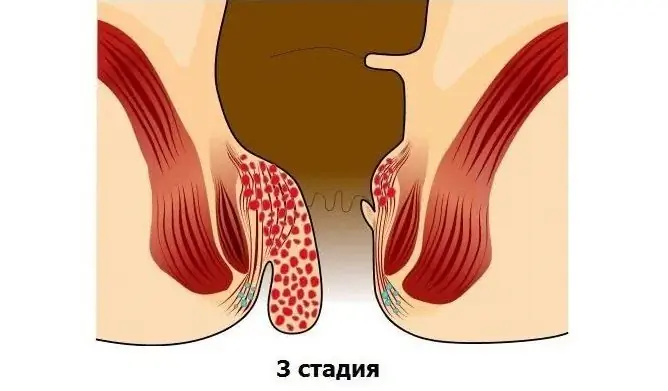- Author Rachel Wainwright [email protected].
- Public 2023-12-15 07:39.
- Last modified 2025-11-02 20:14.
Peyronie's disease

Peyronie's disease is a fibroplastic disorder of the position of the penis with its subsequent curvature, as well as the presence of progressive fibrotic changes. The disease bears the name of the famous surgeon F. Gigot de Peyroni, who discovered it and began research on treatment in 1743.
Causes and symptoms of Peyronie's disease
The main cause of Peyronie's disease is heredity and genetic changes, but injuries can trigger the development of the disease. Scientific research has shown that a number of systemic diseases and pathological changes affect the development of Peyronie's disease.
The first symptoms of the disease may be mild and not cause for concern, but over several weeks or months they intensify. Symptoms of Peyronie's disease are erectile dysfunction and pain with it, as well as the penis becomes curved and shorter, scar tissue grows, plaques form, and the penis is deformed on both sides. As a result, patients experience erectile dysfunction and genital vasospasm.
Penile trauma, including micro-tears, small vessel damage, and hematoma, can be a serious cause of Peyronie's disease. Often, with heavy physical exertion and intense intercourse, fibrous-type plaques are formed, which provoke Peyronie's disease.
This disease can be caused by an autoimmune disorder and the appearance of pathological reactions, as well as a hereditary predisposition to abnormalities in collagen production.
In a number of cases, Peyronie's disease has been caused by side effects of drugs for the treatment of hypertension and heart disease, as well as beta-blockers. Before discontinuing the drug, you should undergo a complete diagnostic examination to identify causal relationships with Peyronie's disease.
Often this male disease is caused by disorders of the connective tissue of the genital organ or age-related degenerative changes after 50 years.
Treatments for Peyronie's disease
Treatment of Peyronie's disease must begin with observation and general examination, since recovery in some cases can occur without medication. In Peyronie's disease, surgery is an extreme treatment.
The patient can be under the supervision of the attending physician and undergo regular consultations for 12 months. The medical professional must constantly monitor the process of plaque formation and not miss a serious curvature of the penis.

The doctor prescribes the type of treatment taking into account the avoidance of the development of erectile dysfunction. Peyronie's disease is treated with intravenous administration of potassium aminobenzoate, colchicine and vitamin E. Colchicine prevents the formation of excess collagen, and vitamin E is an additional agent in therapy.
If necessary, injections of immunostimulating drugs such as interferon, collagenase, etc. are injected into the affected areas of the genital organ. The course of treatment is several months of intensive therapy. In the absence of a therapeutic effect, additional studies are prescribed.
Nesbit's operation for Peyronie's disease allows you to completely eliminate the curved part of the penis, but at the same time it becomes shorter. Such an operation is prescribed in the absence of results from other methods of treatment and only for patients with a curvature angle of no more than 45 degrees.
In Peyronie's disease, prosthetic surgery is performed to correct the curvature and restore sexual function.
YouTube video related to the article:
The information is generalized and provided for informational purposes only. At the first sign of illness, see your doctor. Self-medication is hazardous to health!






